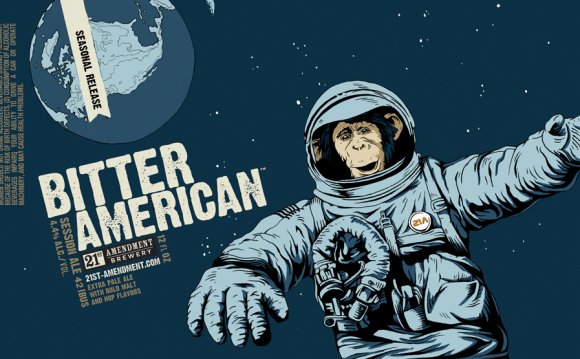
 Ham the Chimpanzee is welcomed home after flight.
Ham the Chimpanzee is welcomed home after flight.
It’s not always well remembered that two chimpanzees helped paved the way for human spaceflight with tests in the 1960. Even less remembered, in the 1940s and 1950s, monkeys perished for the U.S. cause and dogs died in Soviet spaceflight tests.
The space chimps, Ham and Enos, were celebrated at the time. Ham, the first chimp in space and the subject of this photo, preceded the first American in space, Alan Shepherd. Later, Enos flew before before John Glenn orbited the Earth.
In this NASA picture, Ham is greeted by the recovery ship commander after his flight on the Mercury Redstone rocket. On Jan. 31, 1961, Ham greets the commander with what NASA calls the famous "hand shake" welcome. Ham seems calm. In other pictures of the chimpanzees upon return to Earth, they appeared to be hamming it up, grinning with happiness. But the apparent grins actually signified "the most extreme fear" through his baring of teeth, according to the renowned biologist Jane Goodall.
Chimpanzees were sent to space not as a stunt, but because researchers were genuinely unsure how the human body would respond to spaceflight, whether it could withstand the rigors of weightlessness and other harsh conditions.
The first primates in space actually preceded Ham by many years:
- A U.S. military V-2 rocket launched from White Sands, New Mexico carrying Albert I, a rhesus monkey, into space. Lack of fanfare and documentation made Albert an unsung hero of animal astronauts, according to NASA. Albert suffocated and died during the flight.
- A second V-2 carried a monkey, Albert II, to altitude of 83 miles in space. When the rocket returned, the monkey died on impact.
- Dec. 12, 1949: The last V-2 monkey flight was launched at White Sands. Albert IV, a rhesus monkey attached to monitoring instruments, suffered no ill effects — until impact, when it died.
- Sept. 20, 1951: A monkey named Yorick and 11 mice were recovered after an Aerobee missile flight of 236, 000 feet at Holloman Air Force Base, New Mexico. Yorick was first monkey to live through a space flight.
In the early 1950s, the Soviets sent nine dogs into space. The first two, Dezik and Tsygan, survived their initial flight. Dezik perished in a second flight, along with a dog named Lisa. Two other dogs died on a subsequent flight.
The most famous space dog was Laika, launched by the Soviets in Sputnik 2 on Nov. 3, 1957. Laika died in orbit before the satellite burned up on re-entry.
RELATED VIDEO




 Lancaster High School is located in Lancaster, South Carolina, a small town approximately 35 miles from Charlotte, North Carolina. The school serves students in grades 9-12 with a program that provides AP and honors classes, college preparatory classes, a...
Lancaster High School is located in Lancaster, South Carolina, a small town approximately 35 miles from Charlotte, North Carolina. The school serves students in grades 9-12 with a program that provides AP and honors classes, college preparatory classes, a...
 Lunar plaques are rectangular stainless steel plaques (9" x 7 5/8") attached to the ladders on the descent stages of the American lunar modules used from Apollo 11 through Apollo 17. All of the plaques bear facsimiles of the participating astronauts' signatures. Two...
Lunar plaques are rectangular stainless steel plaques (9" x 7 5/8") attached to the ladders on the descent stages of the American lunar modules used from Apollo 11 through Apollo 17. All of the plaques bear facsimiles of the participating astronauts' signatures. Two...
 George r. Carruthers was born in Cincinnati, Ohio on October 1, 1939. From a young age he showed an interest in science and astronomy. He grew up in the South Side of Chicago where at the age of 10 he built his first telescope. Despite his natural aptitude, he did...
George r. Carruthers was born in Cincinnati, Ohio on October 1, 1939. From a young age he showed an interest in science and astronomy. He grew up in the South Side of Chicago where at the age of 10 he built his first telescope. Despite his natural aptitude, he did...








